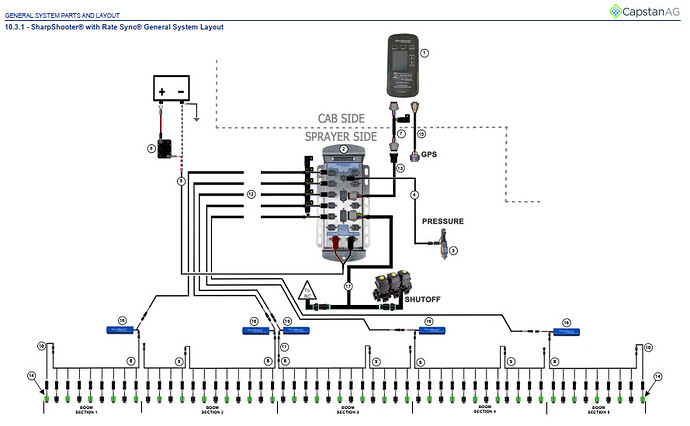Looks very similar to the Capstan solenoid system. The Capstan solenoid also connects to the body that normally houses the drip check valve.
Yes, same as Capstan, I have a few questions, I would be glad if you could answer, I am trying to solve the pwm nozzle system, as far as I know, the flow rate is adjusted with the pwm nozzle duty-cycle, the difference from other systems is that by keeping the pressure constant, the droplet size remains constant and the duty-cycle value changes according to the vehicle speed. control is achieved. Is there any other advantage? I am thinking of creating a system, how can I stabilize the fluid pressure when I run the system using a nozzle (example 03-blue) whose flow I know?
I’m thinking we should start a new thread on PWM Nozzle control. I’m sure there are more who can benefit and contribute.
Is this the Capstan you are referring to?
You’re right, I occupied the page and your topic.
No problem with that!!! I just feel this is another addition to AOG that can benefit others who might not stumble on it here. Might want to start in projects in progress?
I’ve got the PCB designed. With the new Machine module is there anything I should be aware of before I send the file off to get made?
Do you have new Arduino code posted that I could look at? (Make sure I’m not messing something up)
Its in the latest pre release. Doing another release soon.
It’s called MAchine-usb-5_4 or 5_5… Seems to be uploading to 54 not 55
Machine_USB_v5_4.ino (11.4 KB)
@whiterose Would you mind listing the components you use in your switch circuit used in the video above of the pwm spray nozzle?? Mosfet, optocoupler, resistor, diode, etc.
I’ll be posting my reasons why I’m going to use Adafruit’s PCA9685 PWM driver and I want to make sure I’m setup with my PCB to utilize the signal in the future.
Thanks @whiterose I looked that up and the time on is what I was looking for.
That got me wondering how fast the switching time really needs to be. Can you check my math??
If we use the HZ rate of the commercial sprayers 10 - 25 Hz an use the fastest 25Hz that means that 1Hz = 1000 ms. 25 Hz = 1000 / 25 = 40 ms so, as long as a mosfet or relay has a time on + time off < 40 ms we should be good? The flyback diode also needs to switch faster than that.
This math is many for me to better understand what’s happening.
While it is true that at 25 hz the output is cycling every 40 ms, I would think the mosfet needs to be much faster than 40 ms. Depending on the duty cycle, the mosfet might need to turn on and then turn off just a few ms later (or the other way around). Since power mosfets can drive electric motors in the kHz range, I don’t think the mosfet speed will be an issue.
I think like Torriem, and as far as I know, the mosfets in BLDC motor drivers work up to 25 Khz.
I’m wanting this to work when I’m done so I’m going to go your mosfet route. Did you use a optocoupler? If so a number please?

